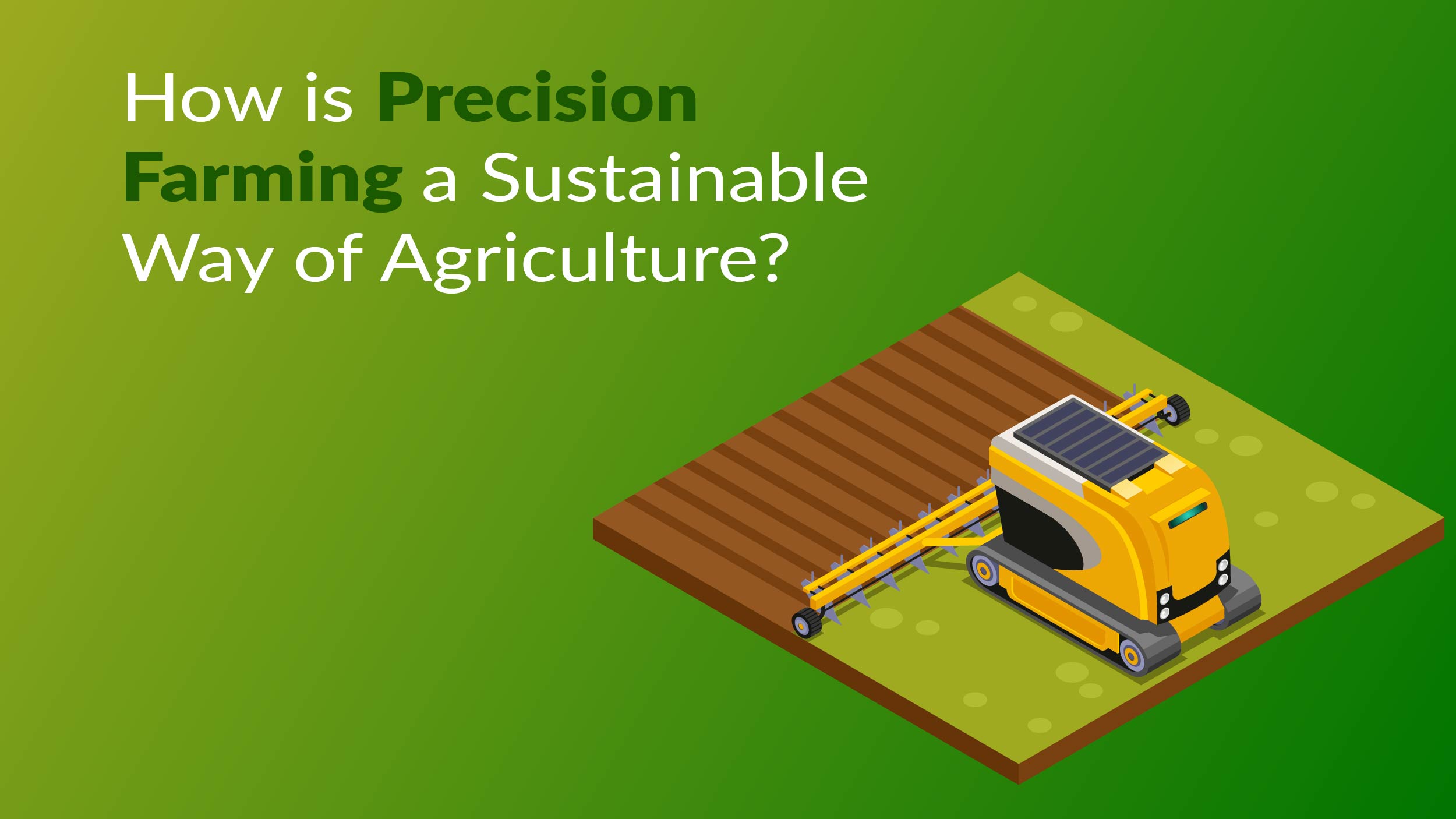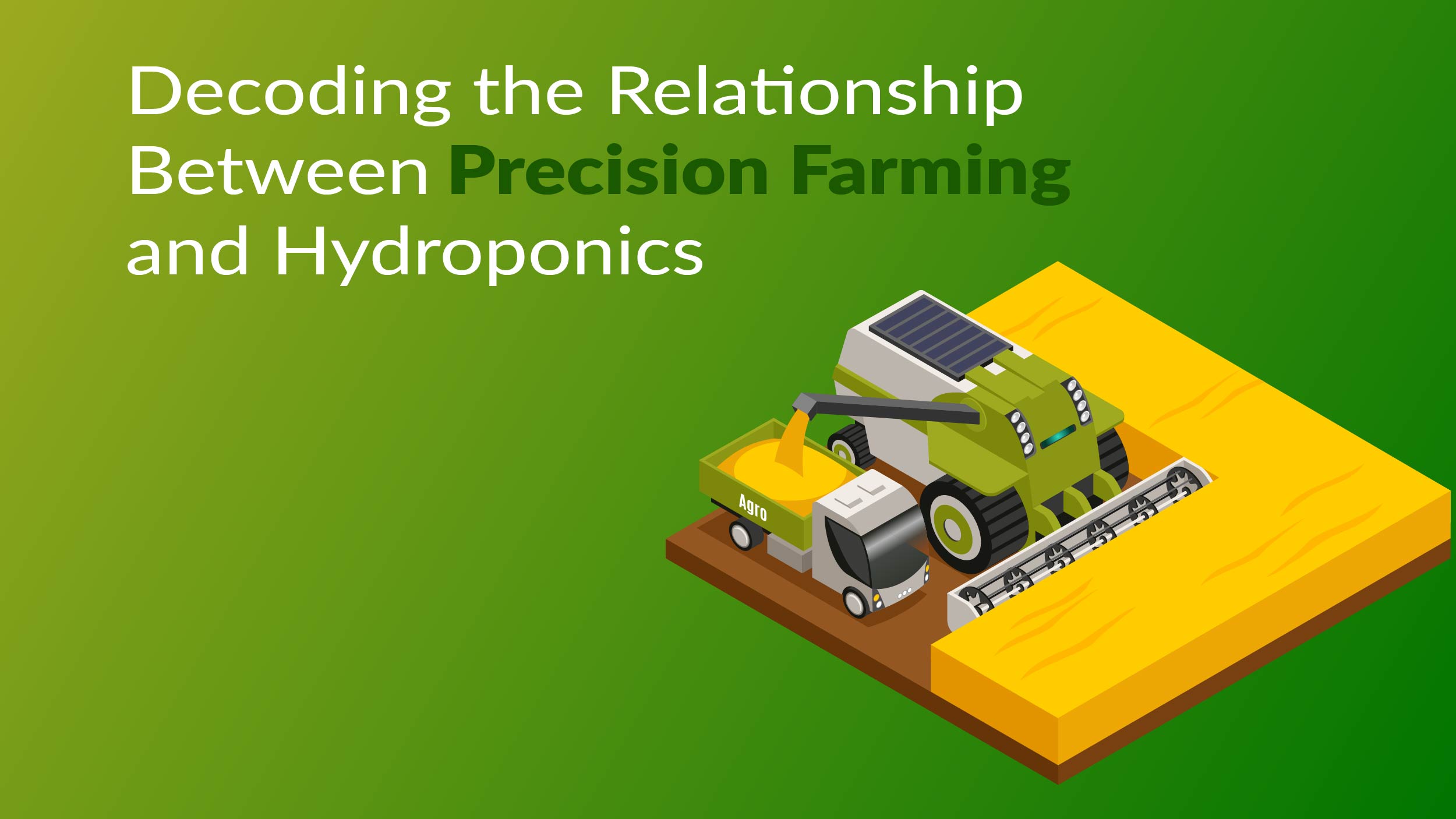Precision farming is transforming agriculture to such an extent that many industry experts view its progress as a significant disruption to sustainable agriculture and food production, akin to the impact of the invention of the John Deere steel plow in the mid-1800s. By leveraging advanced technologies, data analytics, and automation, precision farming enables farmers to make precise decisions about resource allocation, inputs, and cultivation practices. According to Precision Agriculture Development Trust, precision farming has the potential to boost crop yields by as much as 30%. Let’s understand more about it in this blog.
What is Precision Farming?
Precision farming, also called precision agriculture or site-specific crop management (SSCM), optimizes agricultural practices by observing, measuring, and responding to field variability. It utilizes technologies like GPS, remote sensing, data analytics, and automation for precise decision-making on crop inputs, resource allocation, and cultivation. With real-time data, it enhances efficiency, cuts costs, reduces environmental impact, and maximizes yields.
How is Precision Farming a Sustainable Way of Agriculture?

Precision farming is becoming more popular as a result of a number of factors, including the quick adoption of cutting-edge technologies to reduce labor costs and the expanding use and penetration of Internet of Things (IoT) devices in the agricultural sector. Due to its benefits, including significant cost savings, alarming climate change, and the rising demand for food production, farmers and more people are becoming more and more aware of the integration of precision agriculture equipment.
The primary technologies employed in precision agriculture, such as smart sensors, GPS, GNSS, auto-steering and guiding technology, and variable rate technology (VRT), are credited with the significant reduction in labor. Government agencies are also encouraging precision agriculture as a traditional and alternate technique of farming, which helps the industry flourish. Additionally, according to the United States Department of Agriculture, precision agricultural technology adoption in maize output scaled from 15% in 2010 to 80% in 2020.
Also Read: What is Agritech and Why Is It Important for Modern Agriculture?
What are the Challenges of Precision Farming?
Precision farming typically makes use of technological solutions including cameras, sensors, automated systems, artificial intelligence, and hydroponic, aquaponic, and aeroponic systems. According to The Guardian, with precision agriculture, seed costs can be cut by up to 12%.
Running this contemporary technology requires trained and skilled individuals. This is the main challenge faced by the industry: the lack of skilled labor.
The detrimental repercussions of a skilled labor shortage in many international firms are not limited to vertical farming. Furthermore, the majority of farmers enter this market with high-priced, ineffectively designed systems. Vertical farms need to keep up with a variety of farming-related difficulties in order to remain competitive in the market.
Decoding the Relationship Between Precision Farming and Hydroponics

Precision agriculture is a vast field, out of which hydroponics is one of the segments that is witnessing the highest growth. This is because of the growing popularity and low installation costs of gardening. People are increasingly attracted to hydroponic farming because of the ease of use and the innovative method of farming.
In hydroponics, the soil around the plant roots is swapped out for a mineral solution to grow plants. The risk of disease transmission from organisms in the soil is also decreased by the hydroponics technique. The market for hydroponics is projected to grow as customers become more aware of the dangers of pesticides. Because of better nutrient control, plants produced in hydroponic systems produce more than equivalent plants grown in soil. Plant roots are also submerged in a mixture of chemicals and frequently examined to ensure that the proper chemical composition is maintained for growth.
How Does Precision Farming Work?
- Data Collection: Precision agriculture involves collecting data from various sources, such as satellite imagery, drones, sensors, and GPS. These technologies provide information about soil conditions, weather patterns, crop health, and other relevant factors.
- Data Analysis: The collected data is analyzed using advanced analytics techniques, including machine learning and data modeling. This analysis helps identify patterns, trends, and correlations that can inform decision-making.
- Site-Specific Management: Based on the analyzed data, farmers can make precise and informed decisions about crop inputs, resource allocation, and cultivation practices. They can tailor their approach to specific areas within a field, considering variations in soil fertility, moisture levels, and pest infestations.
- Variable Rate Application: Precision agriculture enables farmers to apply inputs, such as fertilizers, pesticides, and water, at variable rates based on the specific needs of different areas within a field. This targeted approach optimizes resource utilization and minimizes waste.
- Automation and Robotics: Advanced technologies, including robotics and automation, are integrated into precision agriculture. These technologies can perform tasks like planting, spraying, and harvesting with precision and efficiency, reducing labor requirements and improving accuracy.
- Data-Driven Decision Making: The insights gained from data analysis and monitoring enable farmers to make data-driven decisions. They can adjust their strategies in real-time, respond to changing conditions, and optimize crop production, resource management, and sustainability.
Winding Up
By collecting and analyzing data on soil conditions, weather patterns, and crop health, farmers can make precise decisions about resource allocation, inputs, and cultivation practices. This targeted approach helps improve efficiency, reduce costs, minimize environmental impact, and maximize yields. Precision farming revolutionizes traditional farming methods by enabling farmers to tailor their approach to the specific needs of different areas within a field, ultimately leading to more sustainable and productive agricultural practices.




